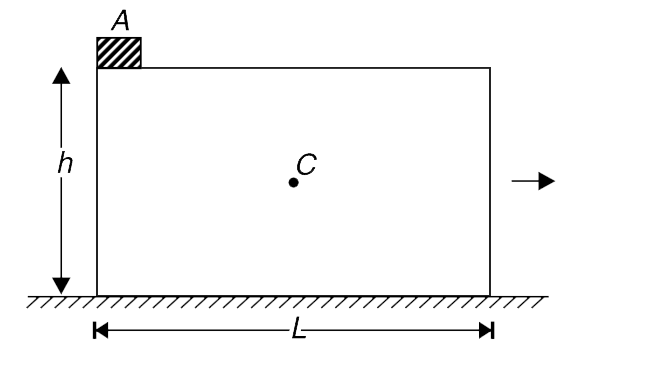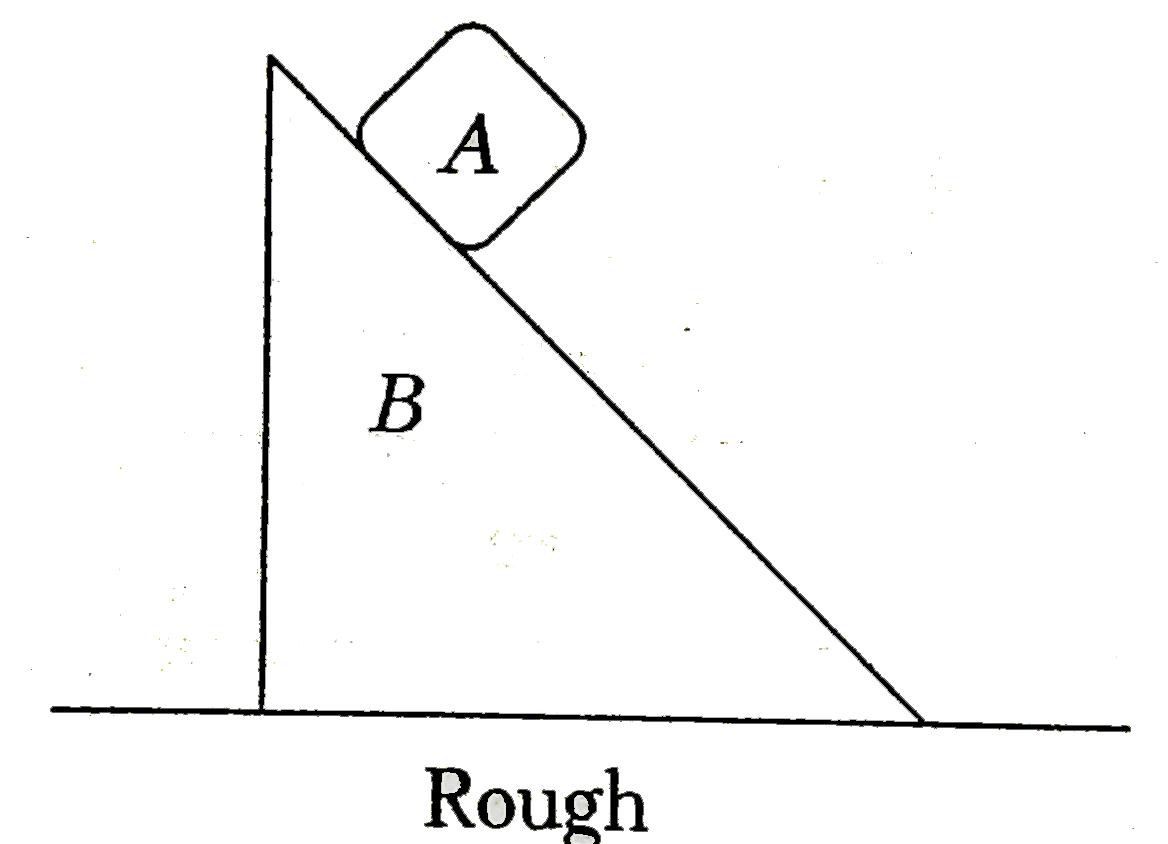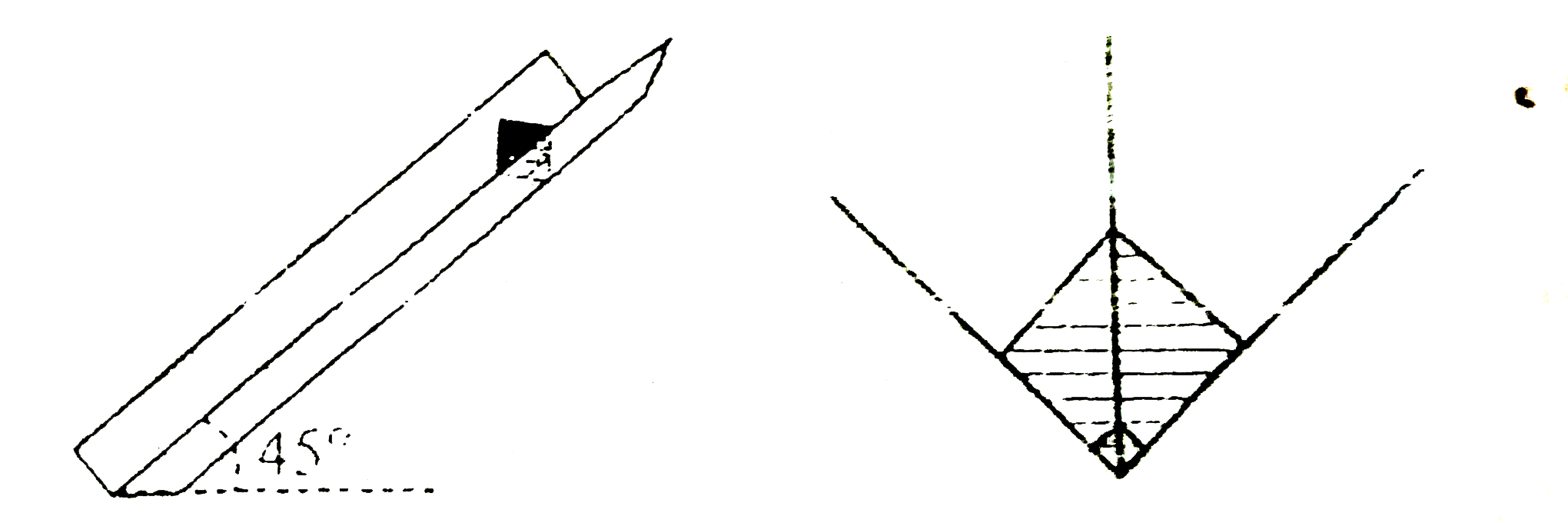Assertion: A cubical block is moving on a rough ground with velocity v. During motion net normal reaction on the block from ground will not pass through centre of cube. it will shift towards right.
Reason: It is to keep the block is rotational equilibrium 
If both Assertion and Reason are true and the Reason is correct explanation of the Assertion.
If both Assertion and Reason are true but Reason is not the correct explanation of Assertion.
If assertion is true, but the reaction is false.
If assertion is false but the reason is true.

f= friction force
Topper's Solved these Questions
- BOOK - DC PANDEYCHAPTER - ROTATIONAL MECHANICSEXERCISE - Level 1 Objective30videos
ROTATIONAL MECHANICS
- BOOK - DC PANDEYCHAPTER - ROTATIONAL MECHANICSEXERCISE - Level 1 Subjective32videos
ROTATIONAL MECHANICS
- BOOK - DC PANDEYCHAPTER - ROTATIONAL MECHANICSEXERCISE - Exercise 12.112videos
ROTATIONAL MECHANICS
- BOOK - DC PANDEYCHAPTER - ROTATIONEXERCISE - (C) Chapter Exercises39videos
ROTATION
- BOOK - DC PANDEYCHAPTER - ROTATIONAL MOTIONEXERCISE - Integer Type Questions17videos
ROTATIONAL MOTION
Similar Questions
These questions consists of two statements each printed as Assertion and Reason. While answering these question you are required to choose any one of the following five reponses
(a) If both Assertion and Reason arecorrect and Reason is the correct explanation of Asserrtion.
(b) If both Assertion and Reason are correct but Reason is not the correct explanation of Assertion.
(c ) If Assertion is true but Reason is false.
(d) If Assertion is false but Reason is true.
Assertion A block of mass m starts moving on a rough horizontal surface with a velocity v. It stops due to friction between the block and the surface after moving through a certain distance.
The surface is now tilted to an angle of 30∘ with the horizontal and the same block is made to go up on the surface with the same initial velocity v. The decrease in the mechanical energy in the second situation is smaller than that in the first situation.
Reason The coefficient of friction between the block and the surface decreases with the increase in the anglle of inclination.View Solution
Consider the situation as shown. If a vehicle moves towards right with constant velocity v0, find the velocity and acceleration of the block in terms of h and x, where x is the distance traveled by the vehicle towards right.View Solution
Knowledge Check
- Question 1 - Select One
Asseration : A block of mass m starts moving on a rough horizontal surface with a velocity v. It stops due to friction between the block and the surface after moving through a ceratin distance. The surface is now tilted to an angle of 30∘ with the horizontal and same block is made to go up on the surface with the same initial velocity v. The decrease in the mechanical energy in the second situation is small than the first situation.
Reason : The coefficient of friction between the block and the surface decreases with the increase in the angle of inclination.AIf both Assertion and Reason are true and the Reason is correct explanation of the Assertion.BIf both Assertion and Reason are true and the Reason is not the correct explanation of the Assertion.CIf Assertion is true, but the Reason is falseDIf Assertion is false but the Reason is true. - Question 2 - Select One
A plank is moving on ground with a velocity v and a block is moving on the plank with respect to it with a velocity u as shown in figure. What is the velocity of block with respect to ground ?
 Av−u towards rightBv−u towards leftCu towards rightDnone of these
Av−u towards rightBv−u towards leftCu towards rightDnone of these - Question 3 - Select One
In the following questions, each question contains Statement I(assertion) and StatementII(reason). Each questions has four choices a, b, c, and d out of which only one is correct.
Statement I: A block of mass m starts moving on a rough horizontal surface with a velocity v. It stops due to friction between the block and the surface after moving through a certain distance. The surface is now titled to an angle of 30∘ with the horizontal and the same block is made to go up on the surface with the same initial velocity v. The decrease in mechanical energy in the second situation is smaller than that in the first situation.
Statement II: The coefficient of friction between the block and the surface decreases with the increase in the angel of inclination.A(a) Statement I is true, Statement II is true, Statement II is a correct explanation for Statement I.B(b) Statement I is true, Statement II is true, Statement II is not a correct explanation for Statement I.C(c) Statement I is true, Statement II is false.D(d) Statement I is false, Statement II is true.
A uniform rectangular block is moving to the right on a rough horizontal floor (the block is retarding due to friction). The length of the block is L and its height is h. A small particle (A) of mass equal to that of the block is stuck at the upper left edge. Coefficient of friction between the block and the floor is μ=23. Find the value of h (in terms of L) if the normal reaction of the floor on the block effectively passes through the geometrical centre (C) of the block.
 View Solution
View SolutionAssertion: In the figure shown, linear momentum of system (of blocks A and B) moves towards right during motion of block A over the block B.

Reason: Initial acceleration of center of mass is towards right.View SolutionA block of mass m moves on a horizontal rough surface with initial velocity v. The height of the centre of mass of the block is h from the surface. Consider a point A on the surface.
View SolutionA cubical block of mass √2kg is sliding down on a smooth inclined right angled trough as shown in the figure. The two adjacent surface of cube are always in contact with the trough. Then the net reaction force on the block is
 View Solution
View SolutionAssertion: Two blocks of masses mA and mB (>mA are thrown towards each other with same speed over a rough ground. The coefficient of friction of both the blocks with ground is same. Initial velocity of CM is towards left.

Reason: Initial acceleration of center of mass is towards right.View Solution

